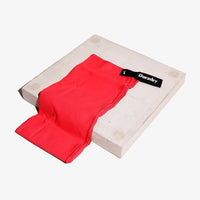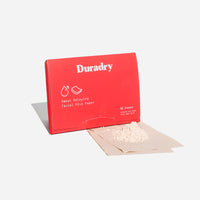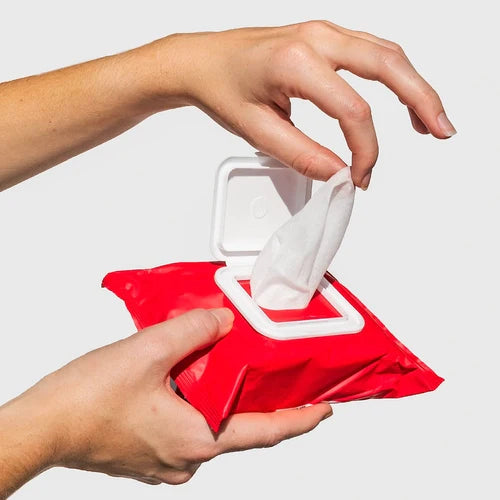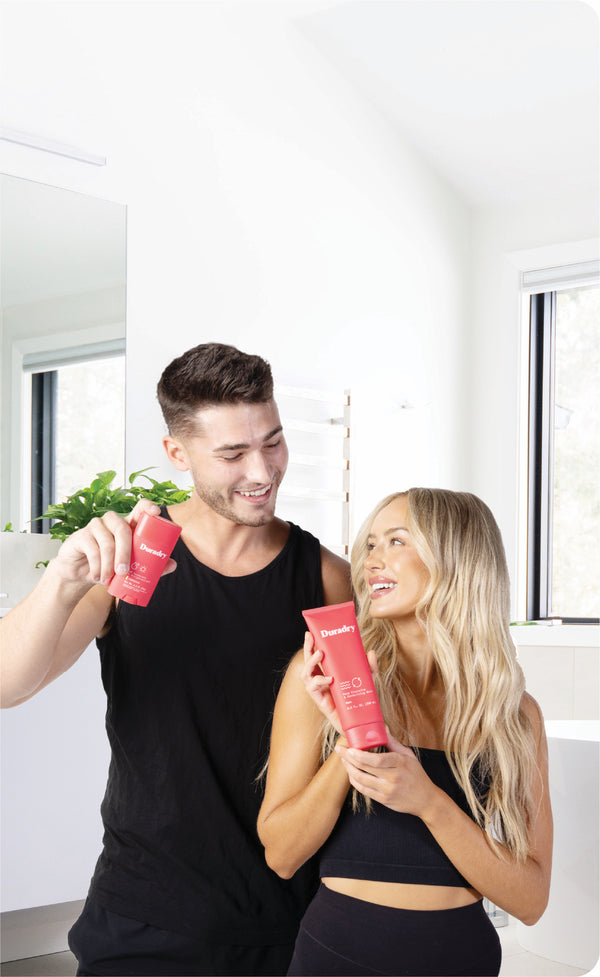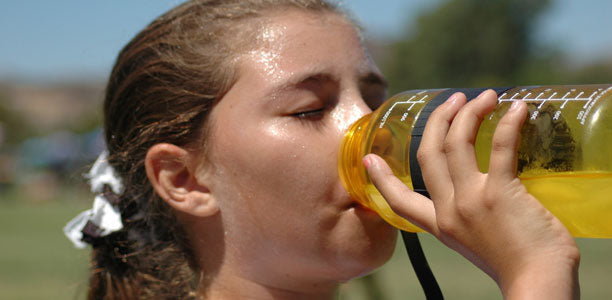Children sweat a lot! And while this is perfectly normal and healthy, it can sometimes be excessive - leading to sweating all over the body, making the child uncomfortable and miserable. That's why it's important to know the right ways to treat excessive sweating in children.
How Much Sweat is Too Much?
Sweating is a natural response to physical activity and the heat, but excessive sweating in children can be a sign of a health problem. If you're concerned about your child's sweat levels, it's important to take appropriate action.
When sweating occurs in situations that heat the body, it is normal. If your child has been physically active or has a fever, you should anticipate them to sweat when they are in a warm atmosphere. They may sweat heavily if the temperature is high. Sweating should cease when they cool down after shifting enviroments or recovering from sickness.
Some children perspire more than others, although it should be clear why they must perspire and it shouldn't make their daily lives difficult. It might be a symptom of hyperhidrosis if your kid is sweating in circumstances that don't make others sweat or if they're frequently losing a lot of water.
It's possible that your kid experiment sweats through clothes or wakes up in a damp bedding, shows sweat on their face or arms even when other people aren’t sweating. Sweats when he or she is feeling stressed or anxious. Has difficulty gripping toys or other objects due to sweaty palms
Some children sweat excessively all over their bodies but others may only be affected in one area, such as their hands or armpits.

Causes of excessive sweating in children
There are many reasons why children sweat excessively, and it can be difficult to determine which child is sweating too much. In cases of excessive sweating that are not due to medical causes, it's important to rule out potential causes and treat the child accordingly. Some common causes of excessive sweating in children include: anxiety, hyperactivity, and over-the-counter medication use. If the excessive sweating is due to medical causes such as an overactive sweat gland, medications may need to be taken regularly in order for the condition to improve over time.
Types of sweating in children
There are two different types of excessive sweating:
1. Primary hyperhidrosis is a stand-alone condition not linked to other medical conditions. With this type, the sweating is only in the armpits, palms of the hands, and feet. It affects 1% to 3% of the population.
2.Secondary hyperhidrosis: happens as a symptom of another condition, like thyroid disorder. The whole body will sweat too much, rather than one specific area.
Children sweat differently based on the type of sweating they have. Children with local sweating, perspire excessively due to physical activity or exercise. Children with secondary hyperhidrosis sweat because of an underlying medical condition. Children with hypothalamic sweating sweat excessively due to an overactive thyroid gland. It's important to identify which type of sweating your child has so you can treat it appropriately.
Excessive sweating at night in young children
Sweating, especially on the head, is common for babies and young children at night. It's usually a result of a warm environment but is sometimes caused by a medical condition.
Most sweat glands are located on the skin’s surface. When the body is hot, these sweat glands secrete sweat to cool down. Most of this sweating occurs in areas where the body concentrates heat- the head and chest, for example. Sweating at night generally happens when a child experiences anxiety or hyperactivity (the brain is working harder to keep your body cool). Excessive sweating might also be a sign of an underlying medical condition such as hyperhidrosis (overactive sweat glands) or PANDAS- pediatric autoimmune neuropsychiatric disorders associated with streptococcal infections.

Diagnosing Hyperhidrosis in Children
Children sweat more than adults, which is perfectly normal. However, when sweat glands in the skin become overactive, it can lead to hyperhidrosis, or excessive sweating. If you think your child is sweating excessively, the first step is to rule out any medical conditions.
Excess sweating doesn't mean that your child has a serious medical condition. Many children who have excessive sweating are healthy. Still, since hyperhidrosis can be an early symptom of several health conditions, it's best to have it checked out.
Your kid's pediatrician will examine the speed of your kid's development and growth as part of the assessment. After that, they will carefully examine your youngster and may take blood samples. You'll need to find out what triggers the excessive sweating in your child. This can be done by asking questions like: When was the sweatiest day of the week for your child? What activities does your child find stressful? What are the triggers for hyperhidrosis in your child? Once you know the source of the sweat, it's time to start treating the condition.
Treatment methods for excessive sweating in children
Treatment options depend on the type and cause of your child's hyperhidrosis. Your child may have primary hyperhidrosis that affects specific areas, so you can try popular treatment methods like topical creams, botox, anticholinergic medications, and antiperspirants.
If your child have generalized hyperhidrosis that affects the whole body the approach is to find and treat the underlying cause of the sweating, rather than to treat the symptom itself.
If your child is going into any treatment it is important to monitor your child while they're taking them.
Safe Hyperhidrosis Treatments for Children
If you're like most parents, you're probably concerned about your child's excessive sweating. Sweating is a natural response to physical activity or stress, but in some cases, the sweat glands may become overactive, leading to excessive sweating. This problem is called hyperhidrosis, and it can be really embarrassing for children and even cause social isolation. There are many safe and effective treatments for hyperhidrosis that work by altering the body's natural Sweating Response Mechanism (SRM). These treatments work by stopping the excessive production of sweat, so the body can start to sweat normally again. Children typically start to sweat more as they age, so it's important to seek treatment early on. The sooner the problem is treated, the better chance there is of a successful outcome.
Antiperspirant
Antiperspirants prevent sweating by mechanically blocking the sweat glands. It is important to keep children sweat-free as they are more likely to sweat than adults. This is because their smaller bodies and higher muscle mass make them more susceptible to sweating. There are different types of antiperspirant for children, depending on their age group. Always consult your doctor before using any type of antiperspirant on a child, especially if it's the first time they're using one. Also, be sure to apply the product in a timely manner and avoid irritation by following the instructions carefully.
Iontophoresis
Iontophoresis is a safe and effective treatment for excessive sweating in children. It uses low levels of electrical current to stimulate the sweat glands, leading to reduced sweating. Can be used alone or in combination with other treatments such as topical creams or oral medications. Usually takes around 6 sessions over a period of 12 weeks for best results.
Oral Medications
Oral medications are a great way to treat excessive sweating in children. Anticholinergic agents work by blocking the innervation of the sweat glands. The most commonly used are Robinul® (glycopyrrolate) and Ditropan® (oxybutynin). By suppressing the production of sweat these medications help reduce the amount of sweat your child is producing. They work by slowing down the body's natural response to stress, which results in a decrease in sweat production. Side effects are usually mild, but should always be discussed with your doctor first before taking them.
Other therapies such as lasers, herbal medicines, microwave energy, and high-intensity ultrasound are not standard options in pediatrics and their efficacy has not been scientifically proven.


